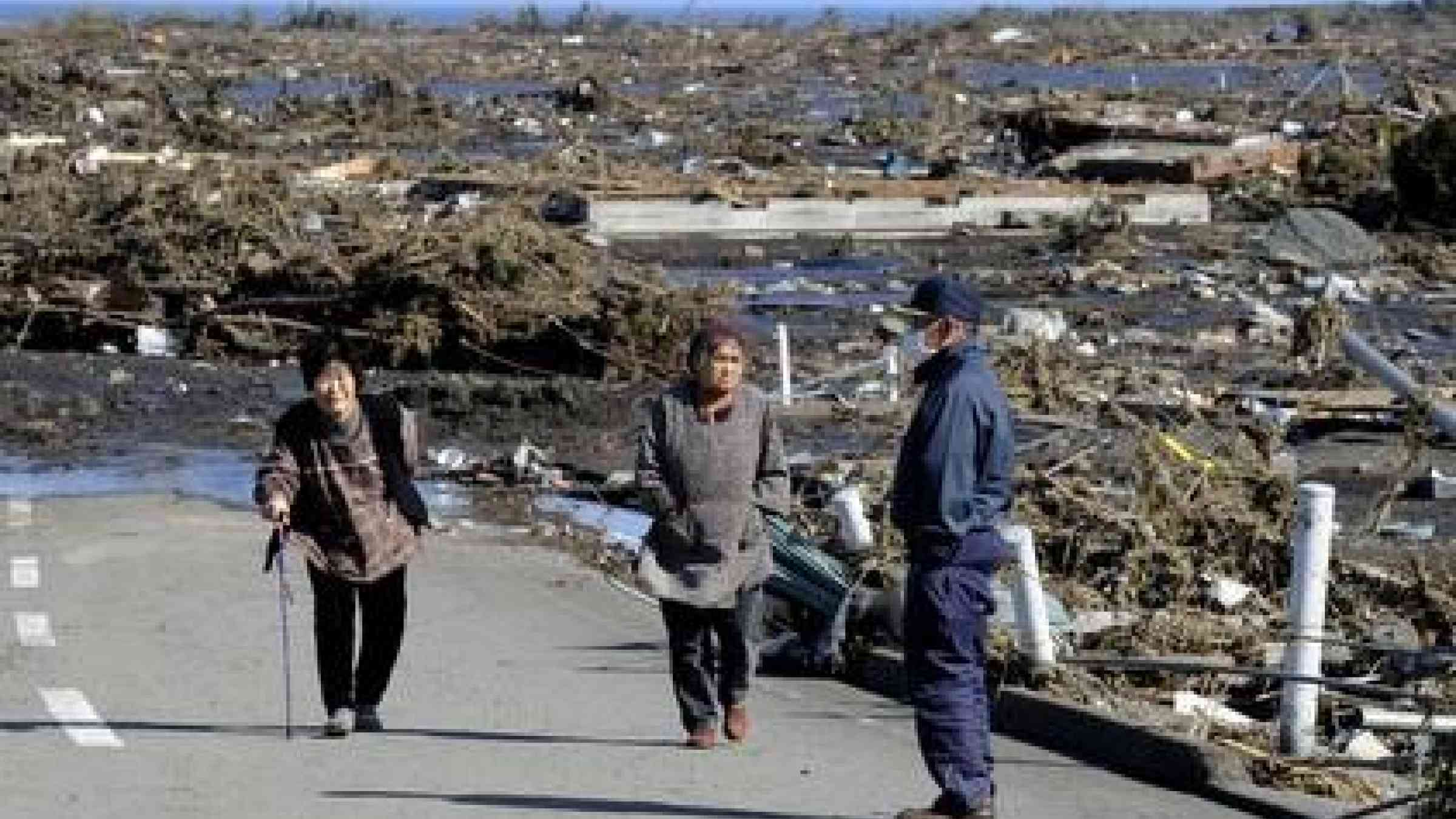Japan quake took toll on women and elderly

BANGKOK, 12 March 2012 - One year ago, the Great East Japan Earthquake and Tsunami took 13,007 lives in Iwate, Miyagi, Fukushima -- the country's three most affected prefectures; 54 percent of those fatalities were women and girls.
A total of 56.1 percent were also aged 65 or over, according to the Japanese National Police Agency (NPA) and again, the majority were women.
"Once more women and elderly people were among the most affected during a disaster," observes Jerry Velasquez, who heads the UNISDR Asia Pacific office. "We really need to factor in the specific vulnerabilities of these two groups into all the disaster management processes if we are going to substantially reduce the number of people killed and affected every year by disasters.
"Addressing these particular vulnerabilities, however, cannot be done in a vacuum. Decision makers today have a pretty clear imperative - seek out the counsel of these vulnerable groups; listen to what they have to say; include their views and above all, make them active players in the processes that are being rolled out on their behalf. This is the only way risk reduction will be effective", says Velazquez.
Profesor Kenji Okazaki from Japan's National Graduate Institute for Policy Studies (GRIPS) is of the same opinion and stresses that "promoting gender equality and finding better ways to protect elderly people remain a priority for all the experts and disaster managers who are working on reducing the impact of disasters".
"Women need to be included and to participate in the reconstruction process," he says, and cites, as an example, the current imbalances in decision-making in the national reconstruction committees in Iwate, Miyagi, and Sendai where there are only nine women members out of a total 61 members.
Building on the experiences of recent disasters, Japan recently sponsored a resolution at the UN's Commission on the Status of Women in New York on gender equality and the empowerment of women in disasters, to integrate women and other vulnerable people in every phase of disaster management processes and secure their participation in building an inclusive society through human-centered and community-based approaches.
"We are moving in the right direction. Social solutions such as community empowerment, education, gender equality, evacuation drills, awareness raising, preparedness measures and better land use planning are viable soft solutions, which will complement hardware solutions such as sea walls and strengthened building codes. The marriage of both will ensure sustainability in the long run," states Velasquez.
The issue of disaster impacts on the most vulnerable is not a recent one on global or national disaster risk reduction agendas. In the 1995 Great Hanshin-Awaji Earthquake in Japan, out of the 6,402 total fatalities 3,680 were women. And Oxfam, for example, reported that up to four times as many women than men died in the 2004 Indian Ocean tsunami.
Over the years there has a been a critical shift in approach and today as UNISDR's Publication Making Disaster Risk Reduction Gender Sensitive states, it is not gender but gender inequality that puts girls and women at risk.
According to the UNISDR publication, at the global level, evidence shows that efforts to promote gender equality in disaster risk reduction have focused on advocacy and awareness-raising, along with support for policy changes. And although there are numerous international policy documents for practically every year since 2000, all clearly stating political commitment to mainstream gender issues into DRR, no tangible or sustainable progress has resulted, with the exception of some ad hoc and inconsistent activities. Any progress is due in great part to the dedicated work of a handful of organizations, particularly NGOs.
The theme of this year's International Day for Disaster Reduction (IDDR 12) on 13 October is Step up for Disaster Risk Reduction: Women and Girls -- the Invisible Force of Resilience. The Day will be a global celebration of the highly effective contributions of women and girls to DRR; critical support which has been somewhat hidden from the public eye, overshadowed in large part by depictions of the two as victims of a problem rather than as enablers of solutions and leaders in a process. IDDR 12 will also be used to lobby decision makers to step up efforts to include women and girls more in DDR planning and implementation processes.
In 2013 a similar approach will be used to highlight the needs and the roles of the elderly in disaster situations.